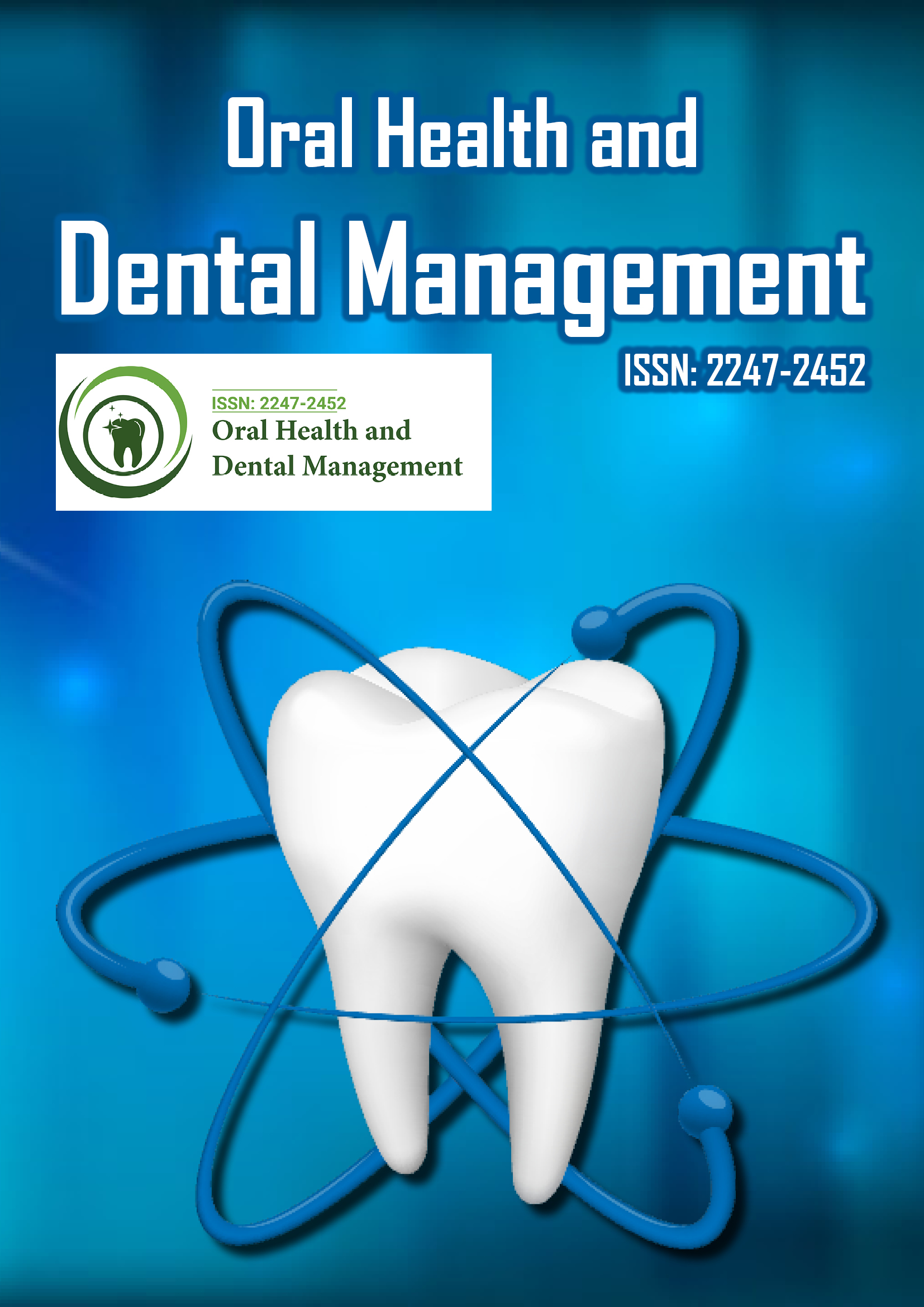Indexed In
- The Global Impact Factor (GIF)
- CiteFactor
- Electronic Journals Library
- RefSeek
- Hamdard University
- EBSCO A-Z
- Virtual Library of Biology (vifabio)
- International committee of medical journals editors (ICMJE)
- Google Scholar
Useful Links
Share This Page
Journal Flyer

Open Access Journals
- Agri and Aquaculture
- Biochemistry
- Bioinformatics & Systems Biology
- Business & Management
- Chemistry
- Clinical Sciences
- Engineering
- Food & Nutrition
- General Science
- Genetics & Molecular Biology
- Immunology & Microbiology
- Medical Sciences
- Neuroscience & Psychology
- Nursing & Health Care
- Pharmaceutical Sciences
Antimicrobial and antioxidant activity of essential oil of cumin dental caries on Streptococcus sanguinis involved on dental caries diabetes mellitus
25th World Congress on Dentistry and Oral Health
March 14-15, 2019 | London, UK
Ilham Ben Yelles, Abdelghani Kahouadji, Latifa Henaoui, Nawal Allal, Mohamed Bouziane and Hafeda Hassaine
University of Oran, Algeria
Posters & Accepted Abstracts: Oral Health Dent Manag
Abstract:
Introduction: Diabetes mellitus is one of the most common chronic diseases in children. However, several studies
have shown that unbalanced diabetes is often associated with changes in the oral environment namely altered
buffering capacity, xerostomia, high numbers of Streptococci and Lactobacilli which increases the risk of dental
caries.
Aim: To reduce the appearance of Streptococcus sanguinis involved in dental caries.
Materials & Methods: After recruiting diabetic children, two young patients responding to informed consent,
underwent salivary sampling for isolation and identification of the bacterium, microbial activity of the extracted oil
was evaluated by the disc diffusion method, then a minimal inhibitory concentration was sought, then antioxidant
activity was achieved by the free radical trapping method DPPH.
Results: Carious disease is present in 80% of diabetic children, 72% had unbalanced diabetes with an average HbA1C
level of 8.1+/-1.6%. The disc diffusion method has shown that essential oil of cumin has intermediate activity on
Streptococci sanguinis. The inhibition diameter is 14mm. This oil also has a more interesting antioxidant activity
(CI50=0.02) than ascorbic acid (CI50=0.048). All experiments were performed in triplicate. Data were analyzed
using SPSS software 21.0 (Chicago, IL, USA). The data are expressed as the meanąstandard deviation values. The
statistical analysis was done using Student's t-test. Values of p<0.05 were considered statistically significant.
Conclusion: Given the high prevalence of carious disease in diabetic children. The essential oil of cumin revealed an
interesting intermediate activity on S. sanguinis, to prevent the installation of the lesion.
Recent Publications
1. Bag A and Chattopadhyay R R (2015) Evaluation of synergistic antibacterial and antioxidant efficacy of essential
oils of spices and herbs in combination. 10(7):e0131321.
2. Freires I A, Bueno-Silva B, Galvao L C de C, Duarte M C T, Sartoratto A, Figueira G M, et al. (2014) The effect
of essential oils and bioactive fractions on Streptococcus mutans and Candida albicans biofilms: A confocal
analysis. 2015(2015):871316.
3. Lee Y (2016) Physiological Production of Essential Oil in Plants-ontogeny, secretory structures and seasonal
variations: Review. Pertanika J Sch Res Rev. 2:1.
4. Zheljazkov V D, Gawde A, Cantrell C L, Astatkie T and Schlegel V (2015) Distillation time as tool for improved
antimalarial activity and differential oil composition of cumin seed oil. PLoS One 10(12):e0144120.
Biography :
Ilham Ben Yelles is passionate about Dentistry and Biological Sciences. She has obtained her first Graduate Diploma in Dentistry at Tlemcen University of Algeria in 2004. In 2012 she has joined the National Laboratory for Research in Applied Molecular Biology and Immunology at the University of Tlemcen, under the direction of Professor Mourad ARIBI In 2015. She enrolled in the Doctoral program in medical sciences where, she learned about the therapeutic effects of metallo proteinases responsible for carious disease in children. After completing additional training, she obtained a Diploma of Sub-specialization in Clinical Health Research at the University of Oran, and in June 2018, a certificate in E-learning in specialized endodontics.
E-mail: drben.yelles@gmail.com
